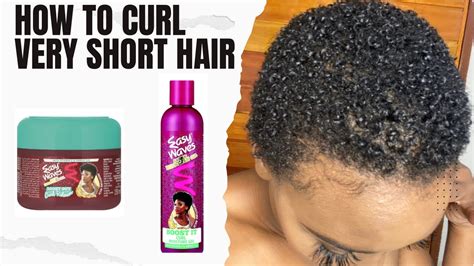Introduction

Curly hair is a beautiful and versatile hair type that can be styled in endless ways. However, some people with curly hair may desire a straighter, smoother look. Curly hair relaxers are chemical treatments that can permanently or temporarily change the texture of curly hair, making it easier to manage and style.
Different Types of Curly Hair Relaxers
There are two main types of curly hair relaxers:
- Permanent relaxers: These relaxers use strong chemicals to break down the hair’s protein structure, resulting in a permanent change in hair texture.
- Semi-permanent relaxers: These relaxers use milder chemicals to temporarily soften the hair’s curls, lasting for several months.
Benefits of Curly Hair Relaxers
- Easier to manage and style
- Reduced frizz and tangles
- Can improve hair’s shine and smoothness
- Can make hair more manageable for heat styling
How Curly Hair Relaxers Work
Curly hair relaxers work by breaking down the hair’s protein structure, which allows the hair to be straightened and reshaped. The chemicals used in relaxers can be harsh, so it is important to follow the manufacturer’s instructions carefully.
Step-by-Step Guide to Using a Curly Hair Relaxer
- Wash and dry your hair: Before applying a relaxer, it is important to wash and dry your hair thoroughly. This will remove any dirt or oil that could interfere with the relaxer’s effectiveness.
- Apply the relaxer: Follow the manufacturer’s instructions for applying the relaxer. Be sure to apply the relaxer evenly throughout the hair.
- Process the relaxer: Leave the relaxer on for the amount of time specified by the manufacturer. This will vary depending on the type of relaxer and the strength of your hair.
- Rinse and neutralize the relaxer: Rinse the relaxer out of your hair thoroughly with warm water. Then, apply a neutralizing shampoo to help restore the hair’s pH balance.
- Condition and style your hair: After rinsing out the relaxer, condition your hair with a deep conditioner to help repair any damage that may have been caused by the relaxer. Then, style your hair as desired.
Tips for Using a Curly Hair Relaxer
- Start with a small section of hair: If you are using a curly hair relaxer for the first time, it is best to start with a small section of hair to test the results. This will help you to avoid any potential damage to your hair.
- Use a gentle shampoo: After using a relaxer, it is important to use a gentle shampoo to avoid stripping your hair of its natural oils.
- Avoid heat styling: Heat styling can damage relaxed hair, so it is best to avoid using heat styling tools as much as possible.
- Get regular trims: Regular trims will help to prevent split ends and keep your hair looking healthy.
Why Curly Hair Relaxers Matter
Curly hair relaxers can have a significant impact on the life of someone with curly hair. Relaxers can make hair easier to manage and style, which can boost confidence and self-esteem. Relaxed hair can also be more versatile, allowing for a wider range of hairstyles.
How Curly Hair Relaxers Benefit Society
Curly hair relaxers can benefit society in a number of ways:
- Increased economic opportunities: Relaxed hair can make it easier for people with curly hair to obtain jobs in professional fields where appearance is important.
- Improved mental health: Relaxers can boost confidence and self-esteem, which can lead to improved mental health outcomes.
- Reduced stigma: Relaxers can help to reduce the stigma associated with curly hair, making it more acceptable for people to wear their natural hair texture.
Conclusion
Curly hair relaxers are a safe and effective way to change the texture of curly hair. Relaxers can make hair easier to manage and style, which can have a positive impact on people’s lives. However, it is important to use relaxers responsibly to avoid any potential damage to hair.
